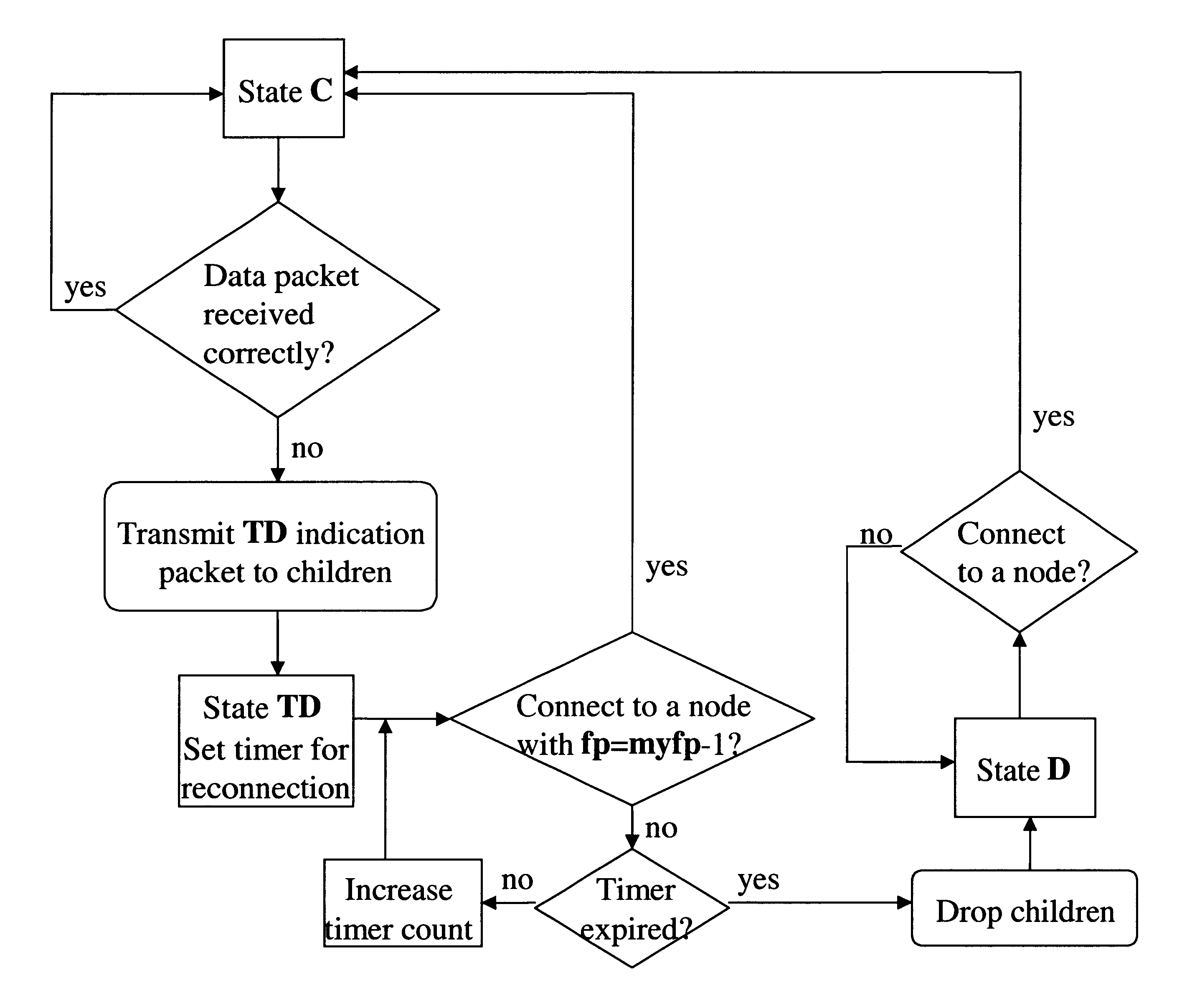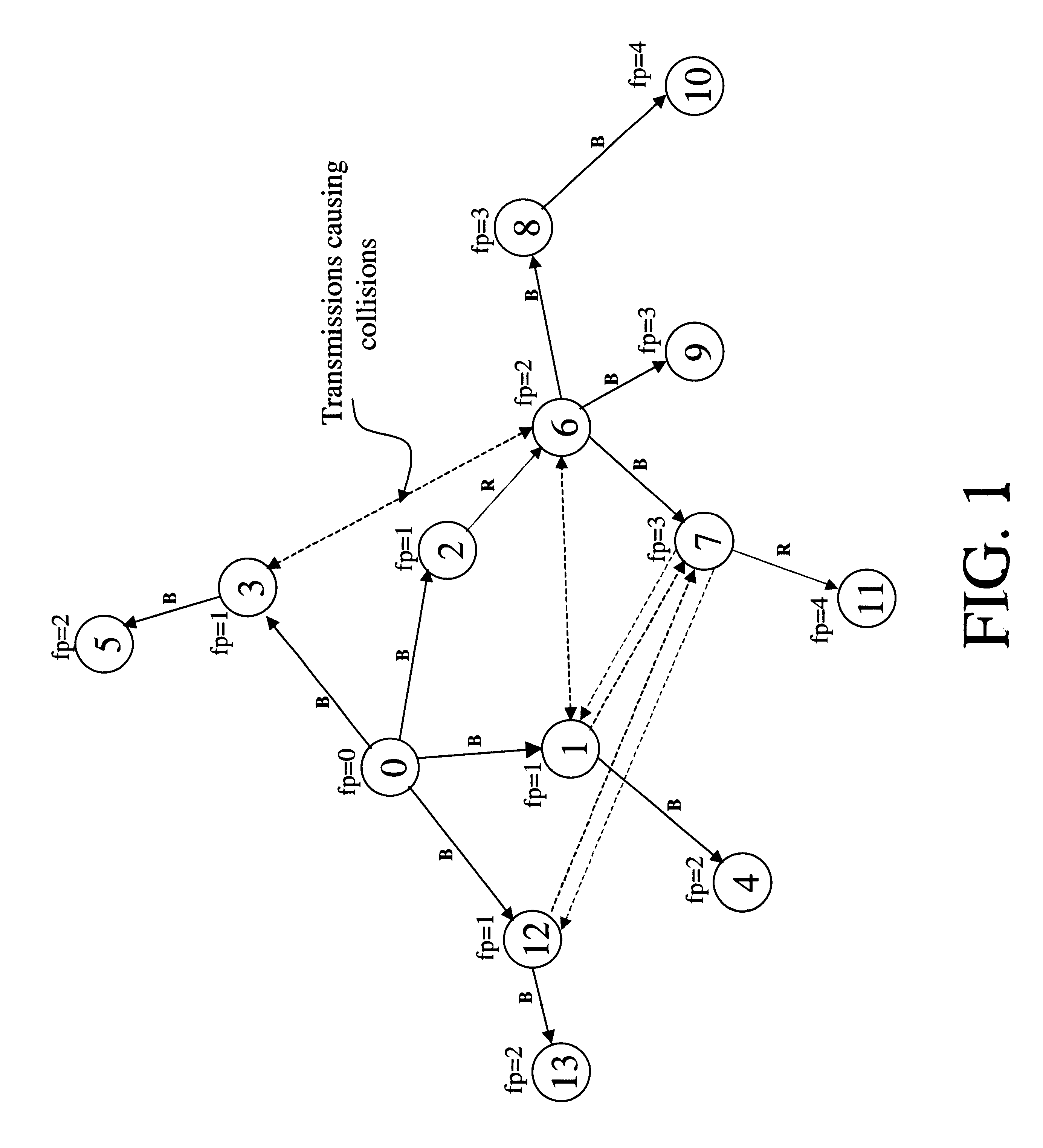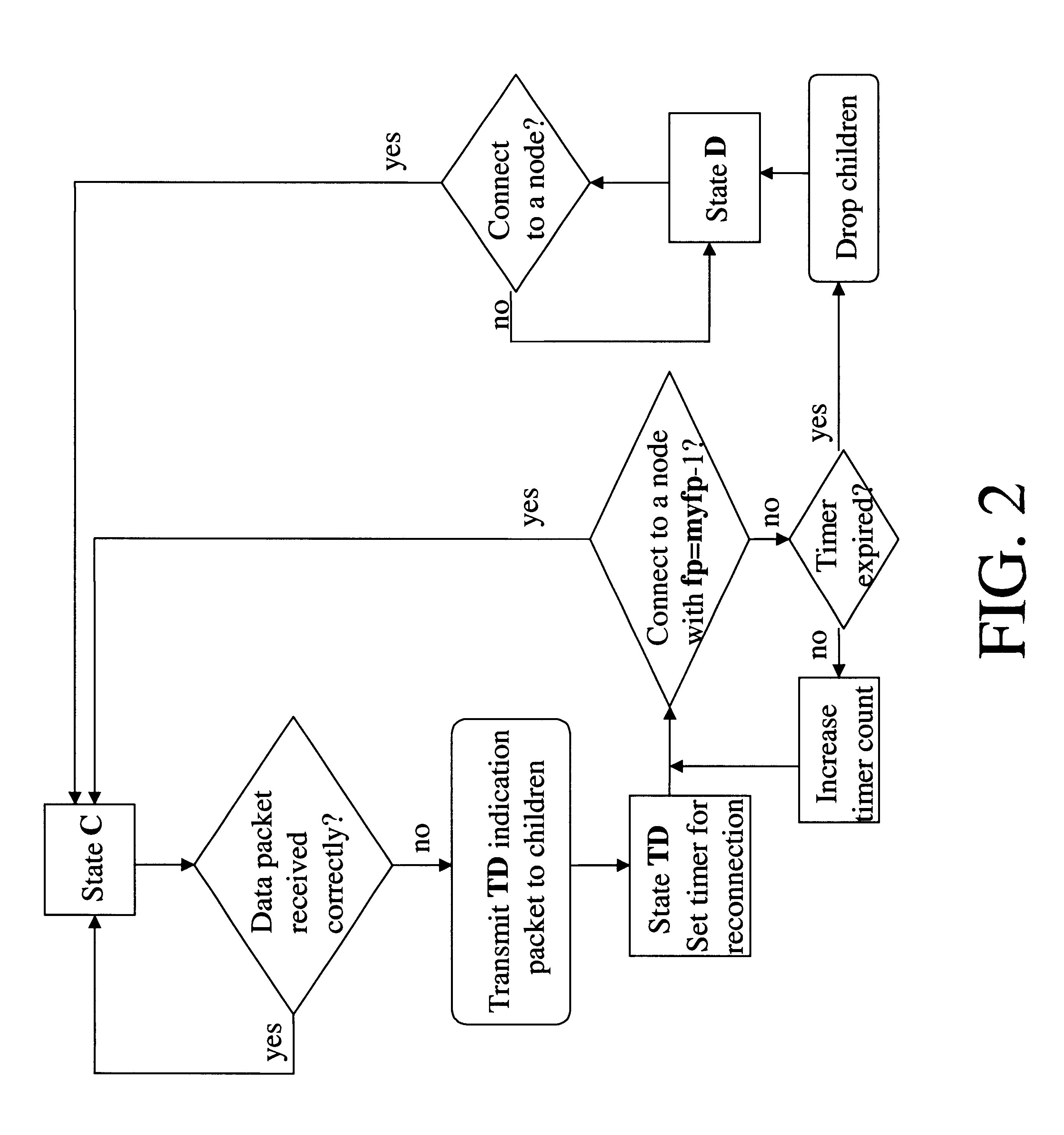Method and apparatus for multicasting real time traffic in wireless ad-hoc networks
a wireless ad-hoc network and real-time traffic technology, applied in the field of wireless ad-hoc network multi-casting real-time traffic, can solve the problems of not providing strict end-to-end quality of service guarantees in terms of bandwidth or delay, neither supporting real-time traffic nor attempting to guarantee any level of service quality
- Summary
- Abstract
- Description
- Claims
- Application Information
AI Technical Summary
Benefits of technology
Problems solved by technology
Method used
Image
Examples
Embodiment Construction
of the Method of the Present Invention
Notations: In the details of the method as described below, the following notations are used:
myfp=the frame position of the node under consideration;
myid=the unique id of the node under consideration; and
U: Union of sets of individual elements (for example colors).
Finally, it is assumed that there is a one to one mapping between colors and integers. That is, different colors are denoted by different integer numbers, 1,2, . . . ,Nc, where Nc is the total number of colors. In what follows it is further assumed that there is a reliable signaling channel (e.g. TDMA time slots shared in a round-robin fashion). This is used for exchanging multicast control messaging. It is important to note that other multiple access techniques could also be used for signaling.
a. Modes of Operation
Three modes of operation may be defined for each node, with respect to the multicast session:
1. Connected state (C), wherein the node is a member of the multicast tree and c...
PUM
 Login to View More
Login to View More Abstract
Description
Claims
Application Information
 Login to View More
Login to View More - R&D
- Intellectual Property
- Life Sciences
- Materials
- Tech Scout
- Unparalleled Data Quality
- Higher Quality Content
- 60% Fewer Hallucinations
Browse by: Latest US Patents, China's latest patents, Technical Efficacy Thesaurus, Application Domain, Technology Topic, Popular Technical Reports.
© 2025 PatSnap. All rights reserved.Legal|Privacy policy|Modern Slavery Act Transparency Statement|Sitemap|About US| Contact US: help@patsnap.com



